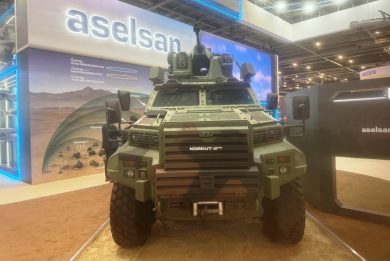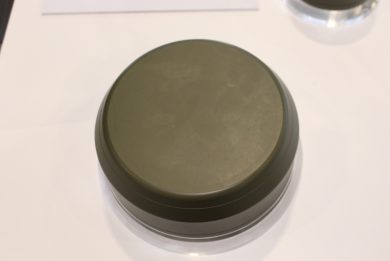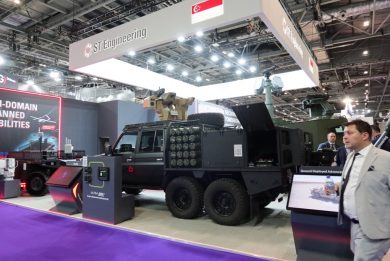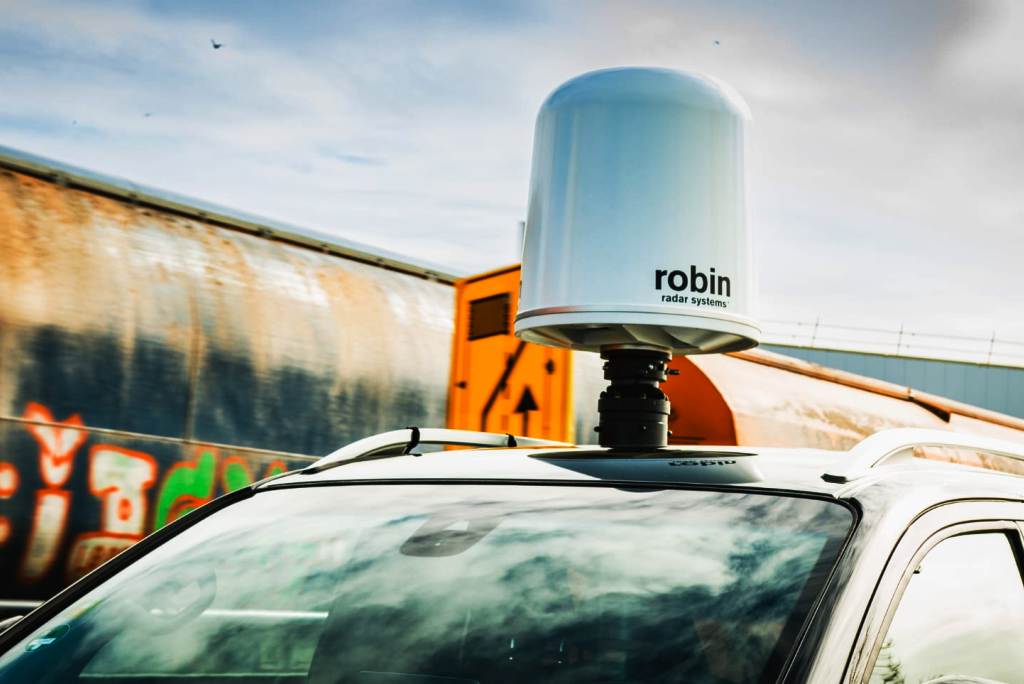
DSEI 2025 – Robin Radar Systems deploys the LRM module for IRIS radar
Robin Radar Systems, a Dutch company specialising in the detection of small aerial objects, has developed IRIS, a three-dimensional counter-UAS radar designed to detect, track, and classify drones with exceptional accuracy in two modes: its normal operational mode and a newly launched long-range mode (LRM).
IRIS is a Frequency-Modulated Continuous-Wave radar operating in X-band with a continuous power output of 2 × 12 W. It provides 360° azimuth coverage and an elevation coverage of 60°, with a rotation rate of 30 rpm, completing a full scan every second. The radar has an instrumented range of 5 km, but this can be extended to 12 km when in the radar’s Long-Range Mode. The radar is highly accurate with a 3D elevation accuracy of 1°, range accuracy of 0.6 metres, and angular accuracy of 0.6-0.75°. The radar dome itself has a diameter of 550 mm and a height of 630 mm, with an upmast mass of 29 kg. Up to four IRIS sensors can operate as a network to cover larger areas or infrastructure. IRIS supports standards data output formats including ASTERIX, SAPIENT, and a proprietary XML API, ensuring compatibility with a range of command-and-control systems.
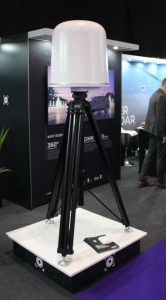
Central to its effectiveness, according to Robin Radar’s Chief Commercial Officer Marcel Verdonk, are two core technologies: micro-doppler signalling and deep neural network (DNN) processing.
Traditional radars struggle to distinguish between drones and birds due to their similar radar cross-sections. IRIS’ micro-doppler radar technology allows the radar to focus on the “unique micro-Doppler signature of drones emitted during flight”. With further testing, the IRIS radar was able to build a database of unique signatures for various airborne objects, allowing it to distinguish between birds, drones and other airborne objects instantaneously. Working in tandem, Verdonk explained how the DNN technology analyses behavioural characteristics such as “speed of target, the pattern of flight and size”, enabling precise classification of aerial targets.
A significant step forward in IRIS’ development was the integration of on-the-move (OTM) technology, a capability Robin Radar spent two years refining. Verdonk explained that OTM allows IRIS to maintain accurate tracking while mounted on moving platforms travelling at speeds of up to 100 km/h.
This is achieved through software corrections that continuously account for vibrations and platform motion. An integrated motion reference unit (MRU), supported by dual GPS antennas, tracks the radar’s relative position and compensates for both vehicle and drone movement. “The software continuously corrects for the changing environment and resynchronises the position of the radar relative to the drone targets,” Verdonk noted.
Operational Deployments in Ukraine
IRIS has seen its most extensive operational use in Ukraine, where more than 200 systems are deployed, including OTM-mounted variants. Donations from several European countries, with the Netherlands as the primary contributor, have made this possible.
In Ukraine, IRIS is employed in multiple roles: protecting critical infrastructure, supporting frontline operations, and adapting to evolving drone threats. Verdonk highlighted that the system has undergone several upgrades since its first deployment, many of which were driven by the Ukrainian Armed Forces’ demand for mobile counter-drone capabilities.
Responding to Evolving Drone Threats
The increasing use of fast FPV drones, seen for example in Ukraine and by the French Armed Forces during the 2024 Paris Olympics, pushed Robin Radar to enhance IRIS’ tracking software. Conventional radars struggled to detect and track these agile drones, but upgrades enabled IRIS to do so reliably.
Most recently, on 8 September, Robin Radar unveiled the Long Range Mode (LRM) Module for IRIS. This feature extends the radar’s ability to detect and classify Shahed loitering munitions and fixed-wing drones at ranges of 5–12 km, with 7–8 km being the typical range for countering such targets effectively.
The new LRM capability, however, presents a trade-off: greater range comes at the expense of near-field visibility, and vice versa. Users can switch between long-range and short-range modes, the latter covering an effective 5 km.
Verdonk confirmed that Robin Radar’s next primary development goal is to merge long and short-range effectiveness into a single operating mode, ensuring full-spectrum coverage. “The next challenge will be to improve the nearby range whilst the long range is in operation,” he said, with solutions targeted for 2026.
Conclusion
From its advanced micro-doppler and DNN technologies to its mobile deployment in Ukraine and the recent introduction of long-range detection, IRIS continues to evolve as a frontline tool against modern drone threats. As Verdonk emphasised, Robin Radar is committed to refining IRIS to meet the increasingly complex requirements of drone defence—on the move, at close range, and over long distances.
Photos courtesy Robin Radar Systems and A. Haywood

